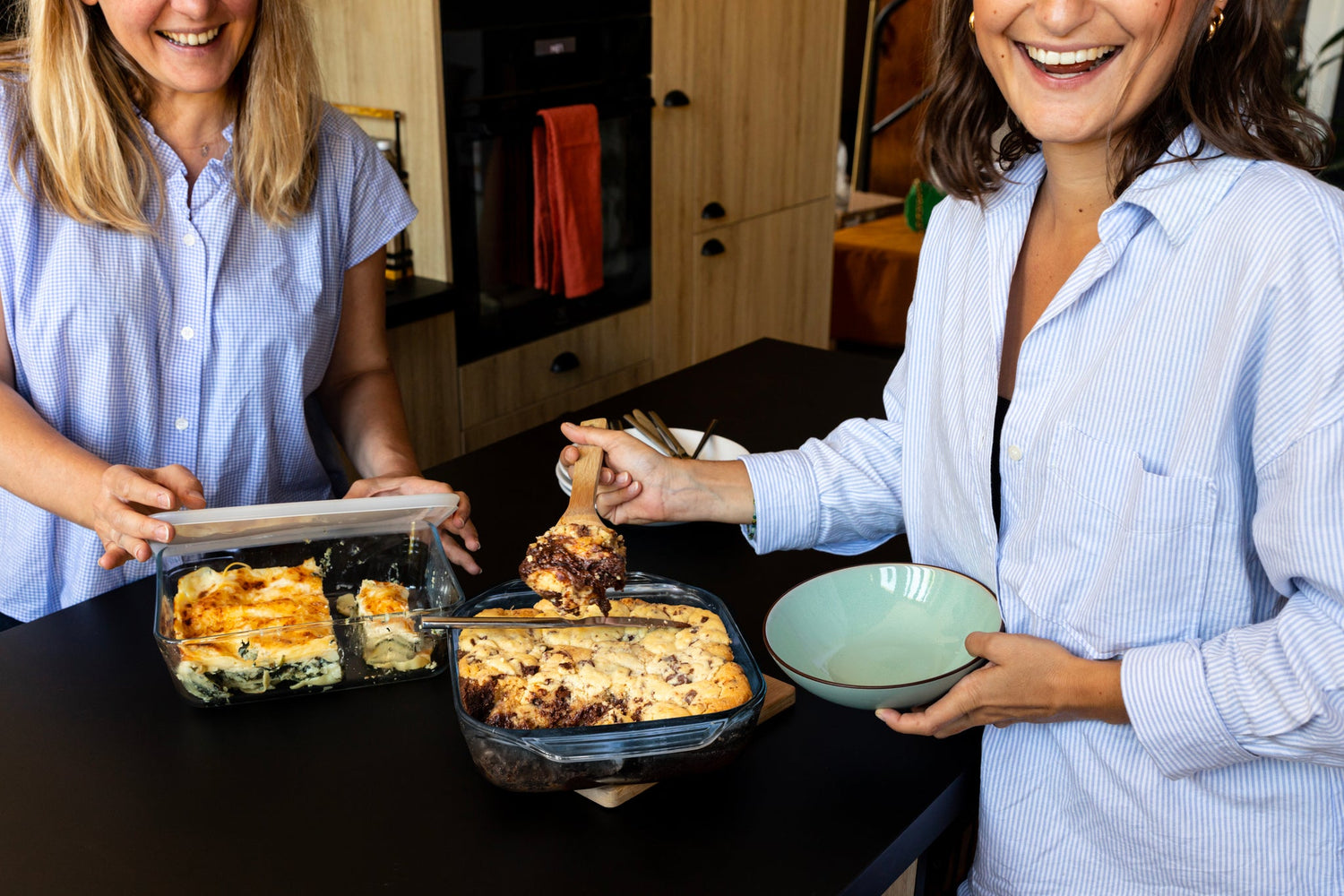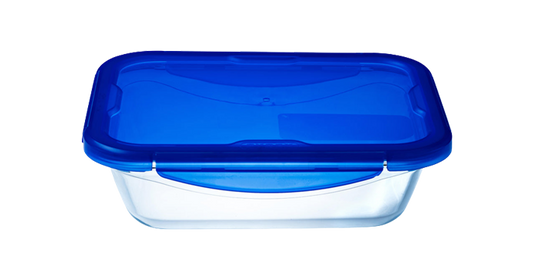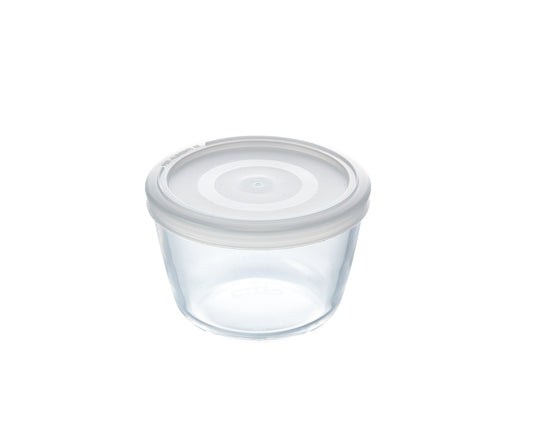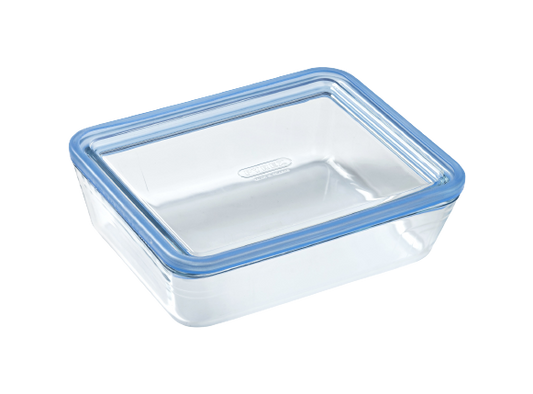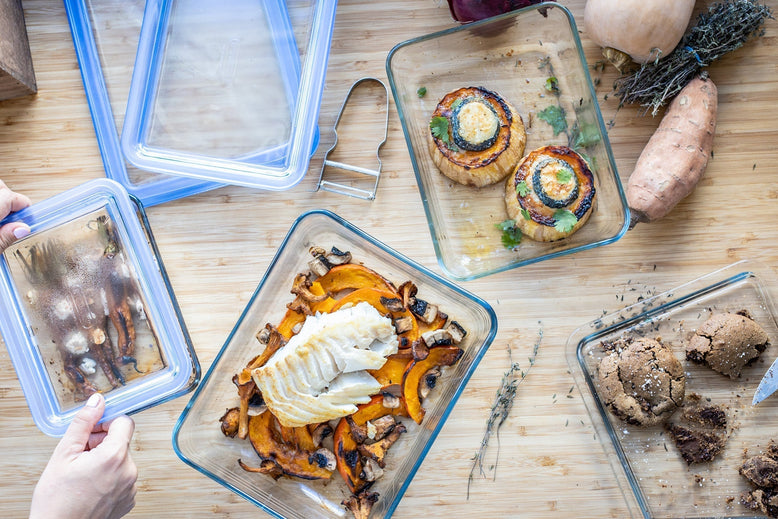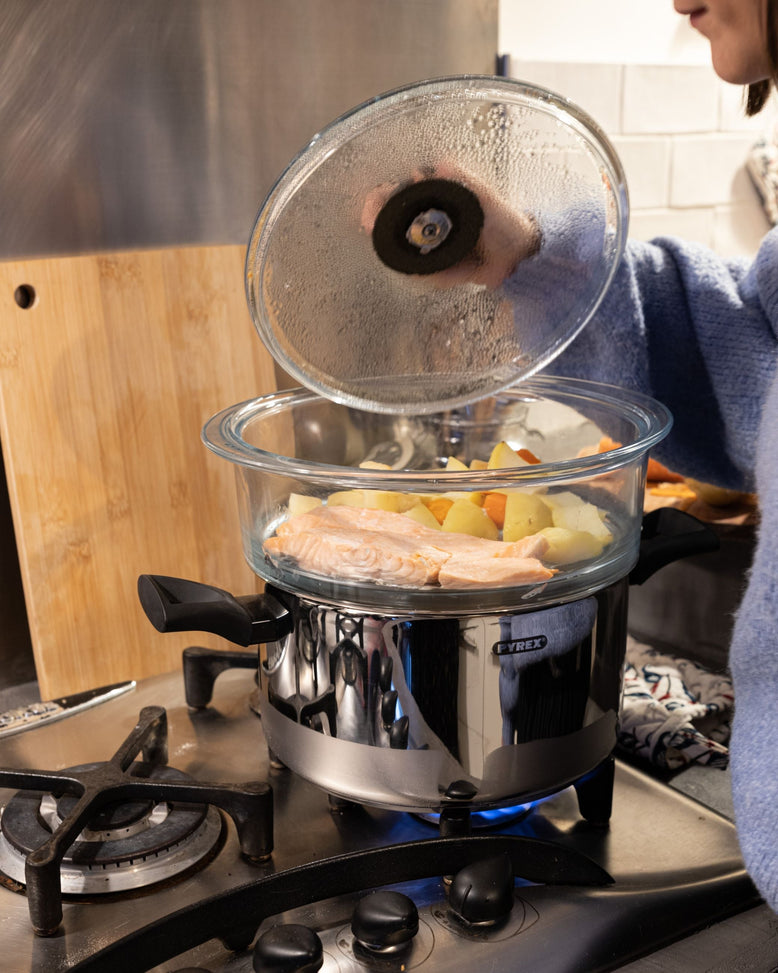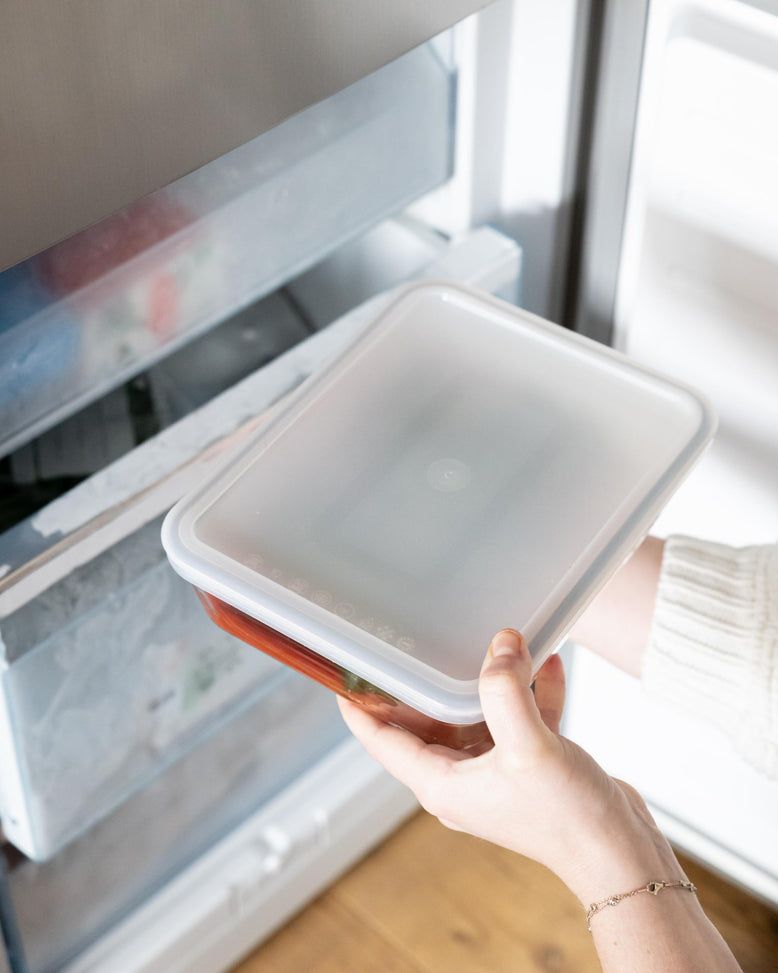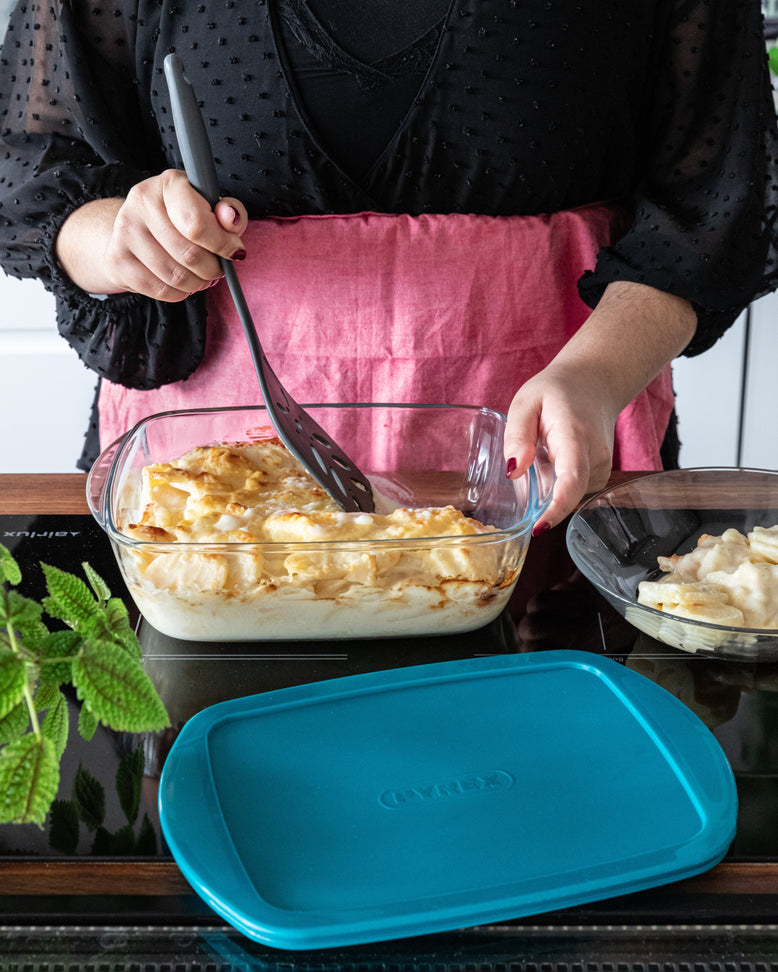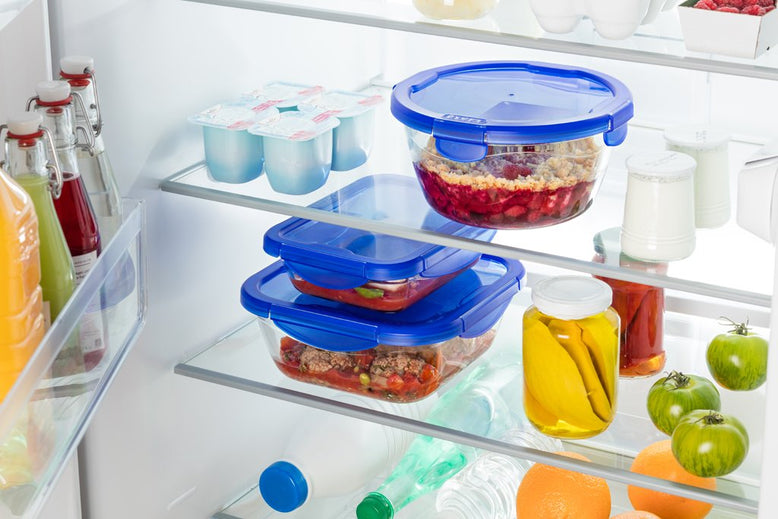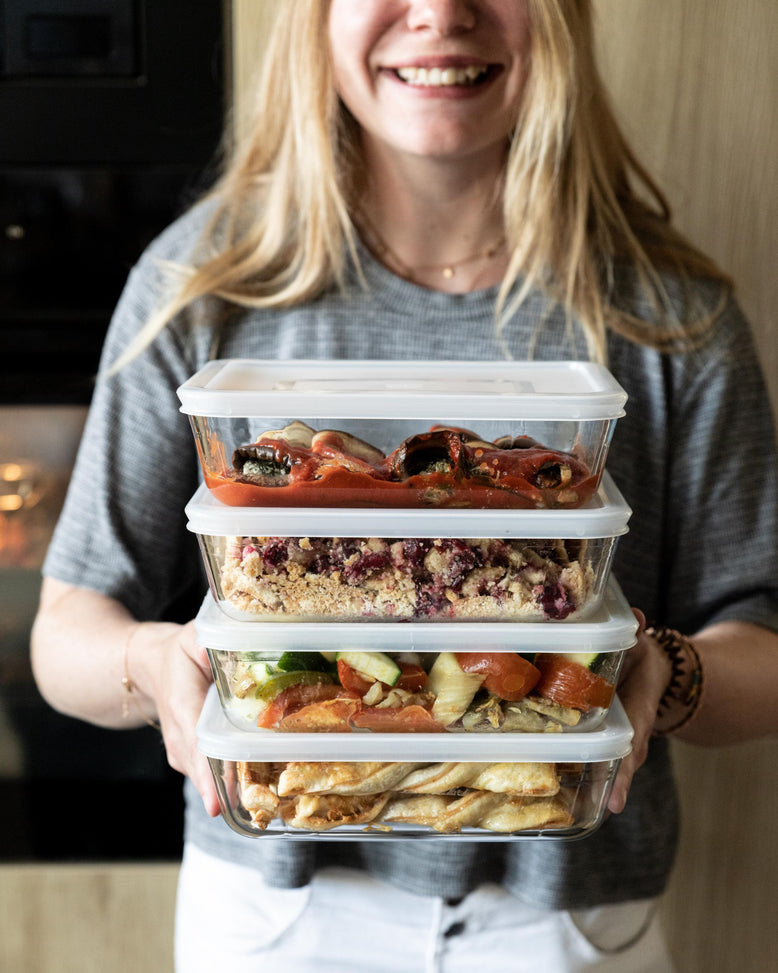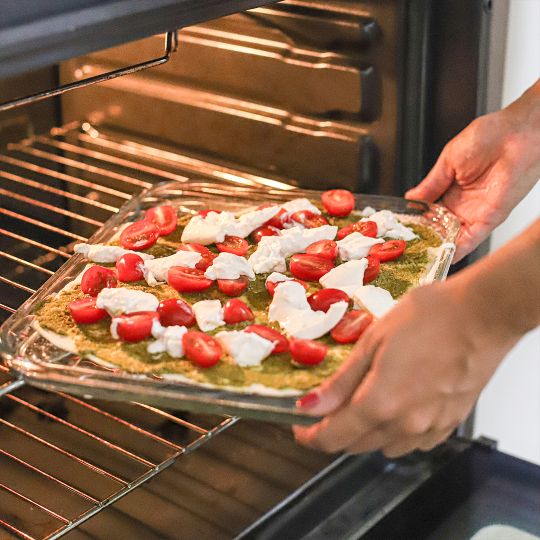Small guide to food preservation and hygiene rules
It is not always easy to know how to store your groceries between the products to put in the refrigerator and those to keep at room temperature. Between respect for hygiene, good practice and the choice of food storage containers, Pyrex® goes all out and presents to you this small guide to food preservation in 9 tips and recommendations.
What are the 6 factors that deteriorate food?
-
Heat: too much heat encourages the reproduction of germs and bacteria and contributes to the wilting of fresh vegetables, such as lettuce or leafy vegetables. It is therefore important to check the storage temperature of your food.
-
Sun rays: they destroy vitamins and contribute to the degradation of oils and fats and make them rancid.
-
Oxygen: it changes the nature of food, dries it out, causes a loss of vitamins and acts on the preservation of fatty foods, such as oil, which should be kept hermetically closed in a cupboard away from light and the air of the room.
-
Humidity: promotes fungi, bacteria and other molds on food. Having a ventilated cold refrigerator limits humidity and allows longer preservation of goods.
-
Microbial contamination: the appearance of micro-organisms quickly damages food. It is important to respect hygiene rules such as frequent cleaning of your refrigerator or quickly cooking food.
-
Enzymes: they are the ones that rapidly oxidize your food. They are found when you cut an apple, mushrooms or an avocado in half. One method consists of adding lemon to these foods or immediately plunging potatoes into water as you peel them, for example.
The 9 techniques and methods for optimal food preservation
The preservation of our food is mainly based on two large categories which are heat and cold. We will see that other methods, perhaps less known such as fermentation, are also possible.
Preservation techniques using cold
Here we are talking about refrigeration, freezing and deep freezing. Cold limits the development of bacteria provided you know how to manage cooling temperatures.
Refrigeration: if you are wondering how to avoid food waste, refrigeration is one of the methods that allows you to preserve your food longer. By keeping them at an adapted temperature between 0 and 8 °C depending on the zone of the refrigerator and by knowing how to organize your fridge, your products remain healthy and fresh.
Freezing: it does not adapt to all products, as it alters the texture and taste of certain foods during defrosting. Freezing is perfect for the preservation of meat and fish, raw or blanched vegetables or prepared dishes. Its ideal temperature is between -18 °C and -24 °C.
Deep freezing: exposes food for a short time to a temperature between -35 °C and -150 °C. It is used for rapid freezing by the food industry. It very quickly fixes the state of the product and allows it to preserve all its qualities.
► To know everything on the subject, follow the Pyrex® freezing guide.
Preservation techniques using heat
Pasteurization was invented by Pasteur hence its name, pasteurization is mainly used to preserve milk. The latter undergoes a rise in temperature for a few seconds up to the precise point before boiling. The bacteria are thus destroyed and the milk can be preserved longer, provided, however, to keep it cool and not to break the cold chain.
Sterilization heats food placed in glass jars to at least 120 °C for about twenty minutes. Sterilization mainly concerns canned food.
Ultra-high temperature or UHT: consists of a rapid rise in temperature to 140 °C in a few seconds. It is the preferred means of preservation for milk and fresh creams called long-life.
Dehydration contains three principles which are:
-
drying or elimination of water by a rise in heat or a gentle and progressive regulated ventilation for long hours;
-
lyophilization which eliminates the water present in the food by rapid freezing, then sublimation of the frozen product (separation of the water in the form of ice contained in the product which immediately turns into vapor without going through the liquid state);
-
concentration which eliminates part of the water contained in a food product.
It should be noted that UHT and dehydration are reserved for professionals of the sector because they require suitable professional equipment, although today it is possible to buy a dehydrator on the market.
Other preservation methods
-
Fermentation: today it is part of alternative preservation methods which use acidification through the natural activation of yeast or good bacteria. Sauerkraut is one example. Many vegetables, such as cauliflower and carrots, can be preserved in glass jars only.
-
Vacuum preservation: it extends the shelf life on average by 5 times by eliminating deterioration due to oxidation by air. This process has become widely democratized with the arrival of machines for the general public. It is also possible to buy storage boxes with a compatible lid delivered with a vacuum pump which makes it possible to preserve food longer away from air.
-
Ionization or irradiation: it exposes food to particular radiation which destroys viruses, bacteria and micro-organisms. Its drawback is that the process damages living cells. It is found in the preservation of flours, vegetables and dried fruits and spices. Its use is reserved for industry.
Reminder on hygiene rules
The proper preservation of food is essential for food safety. It limits their natural degradation by the proliferation of bacteria and micro-organisms which represent risks for our health. Remember to use a glass container to preserve your food.
Individuals have at their disposal refrigeration, freezing and preservation by heat. Other simple actions also make it possible to maintain good hygiene of food products:
-
remove cardboard packaging which brings humidity;
-
arrange products in the adapted zones of the refrigerator:
-
meats, cold cuts, poultry and fish as well as fresh cream and cream desserts and opened food in the cold zone located in the lower part of the refrigerator;
-
homemade dishes, cooked vegetables, cooked meats and fish, yogurts and soft cheeses in the middle part;
-
fresh vegetables in the vegetable drawer;
-
eggs, butter, milk and fruit juices in the door which are consumed quickly and can be preserved at about 6 °C.
-
never overload the refrigerator to let the air circulate freely;
-
clean the refrigerator regularly to limit bacteria;
-
defrost the freezer regularly and clean the refrigerator in case of absence of ventilated cold;
-
check the expiry dates and consume in priority those with the shortest one;
-
check the absence of food moths in the cupboards which like flour and other legumes;
-
buy what you need for quicker consumption;
-
consume quickly cooked or opened dishes;
-
always place opened food in a hermetically sealed glass container rather than in its original packaging (canned food in particular);
-
do not keep dishes based on raw egg (mayonnaise or chocolate mousse) more than 24 hours.
Discover our other tips and tricks on the Pyrex® blog.

